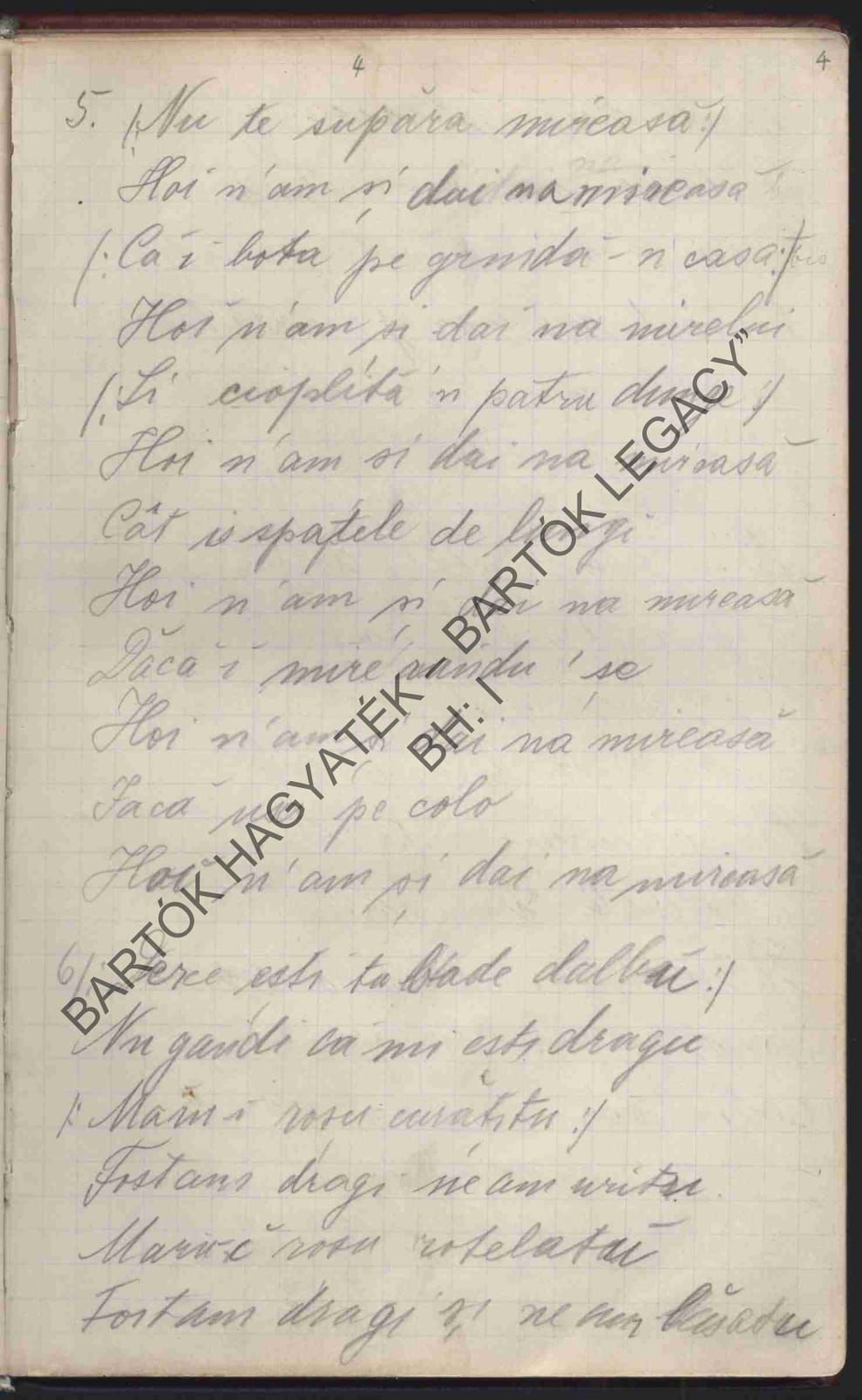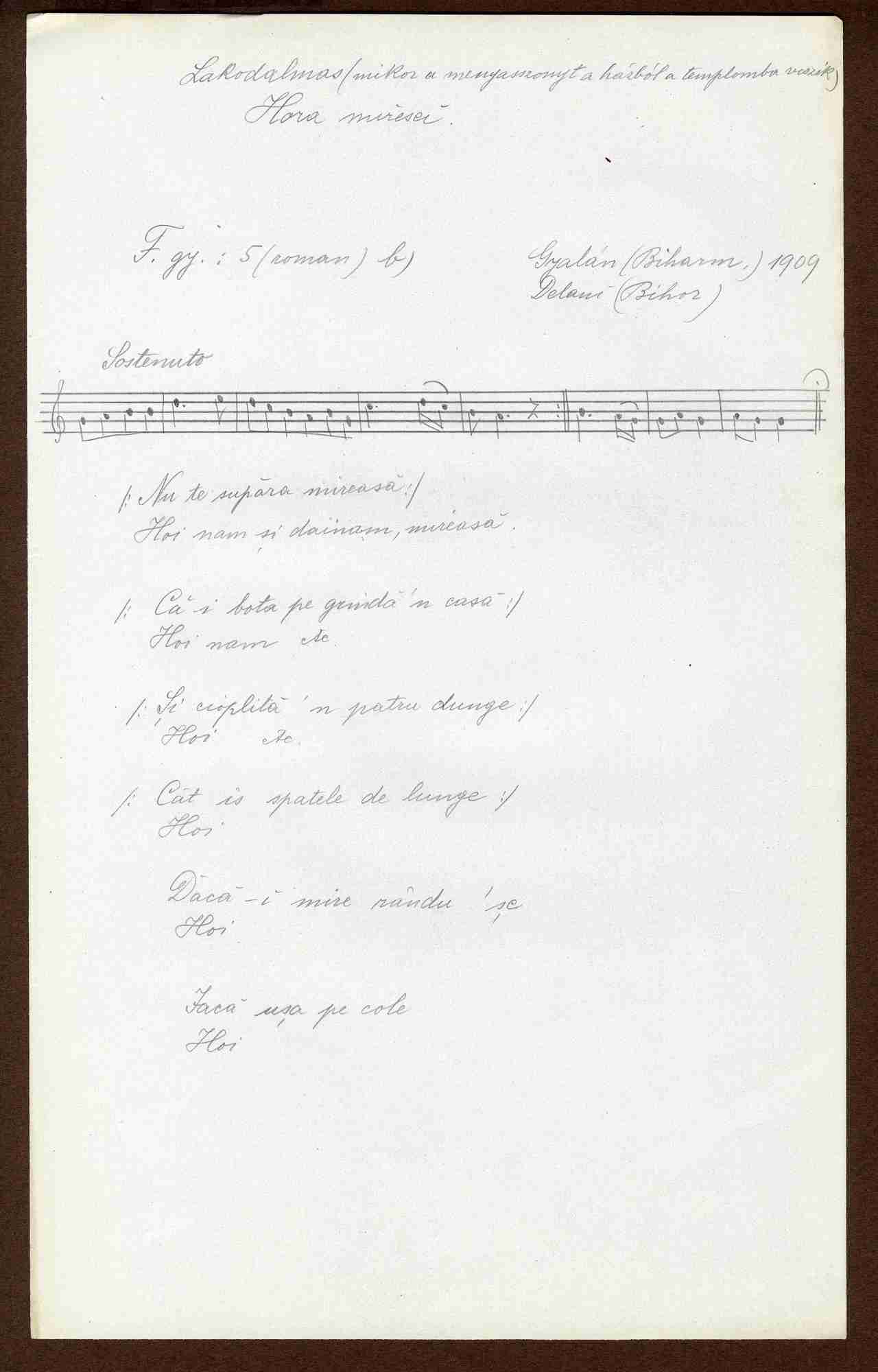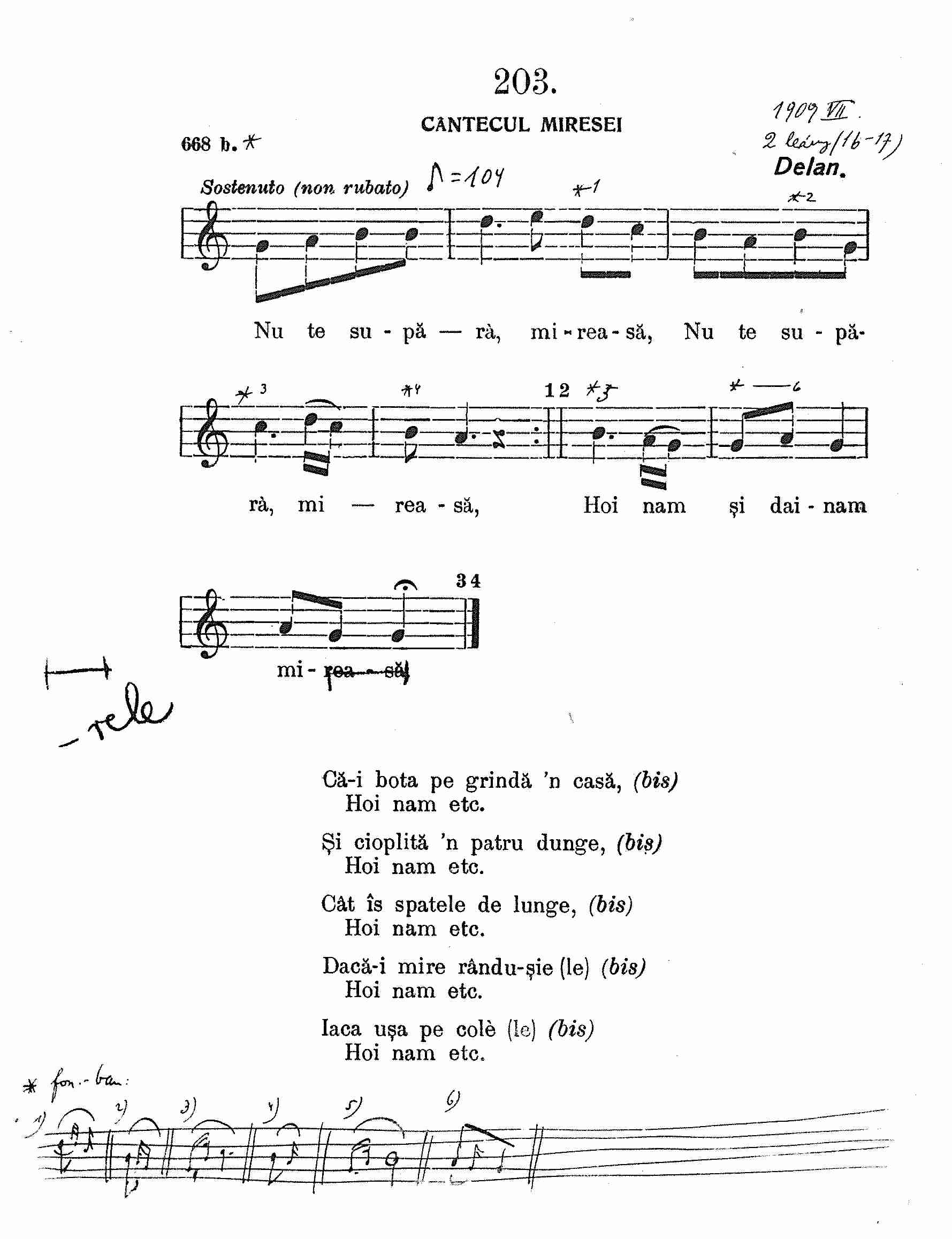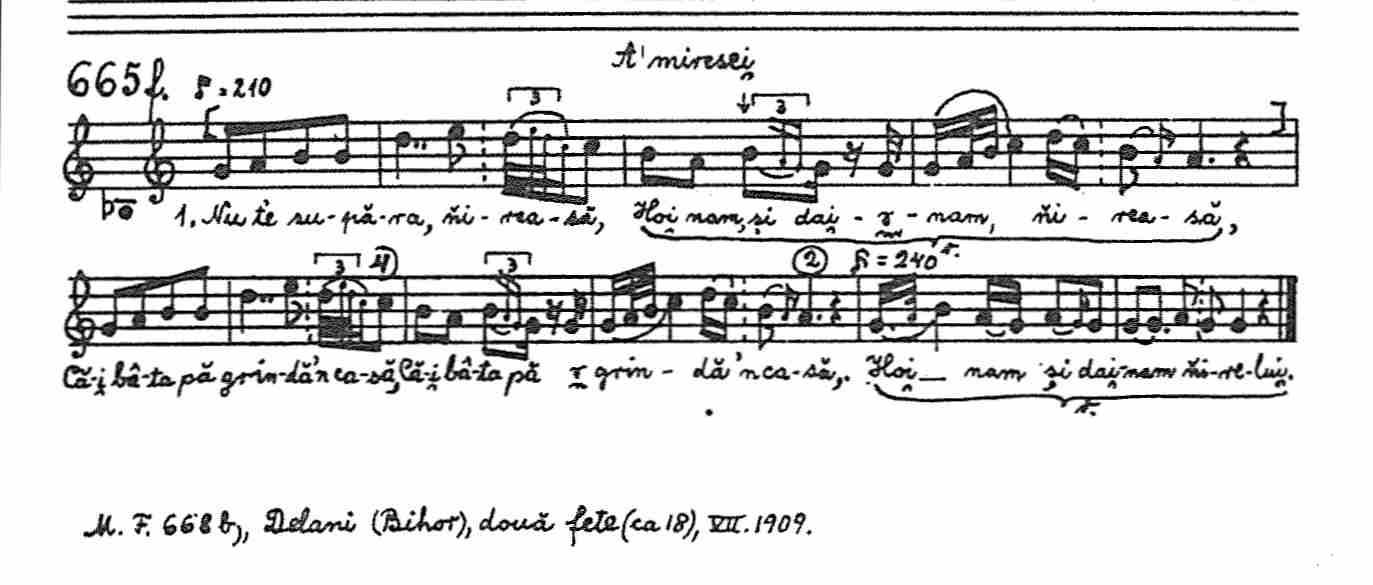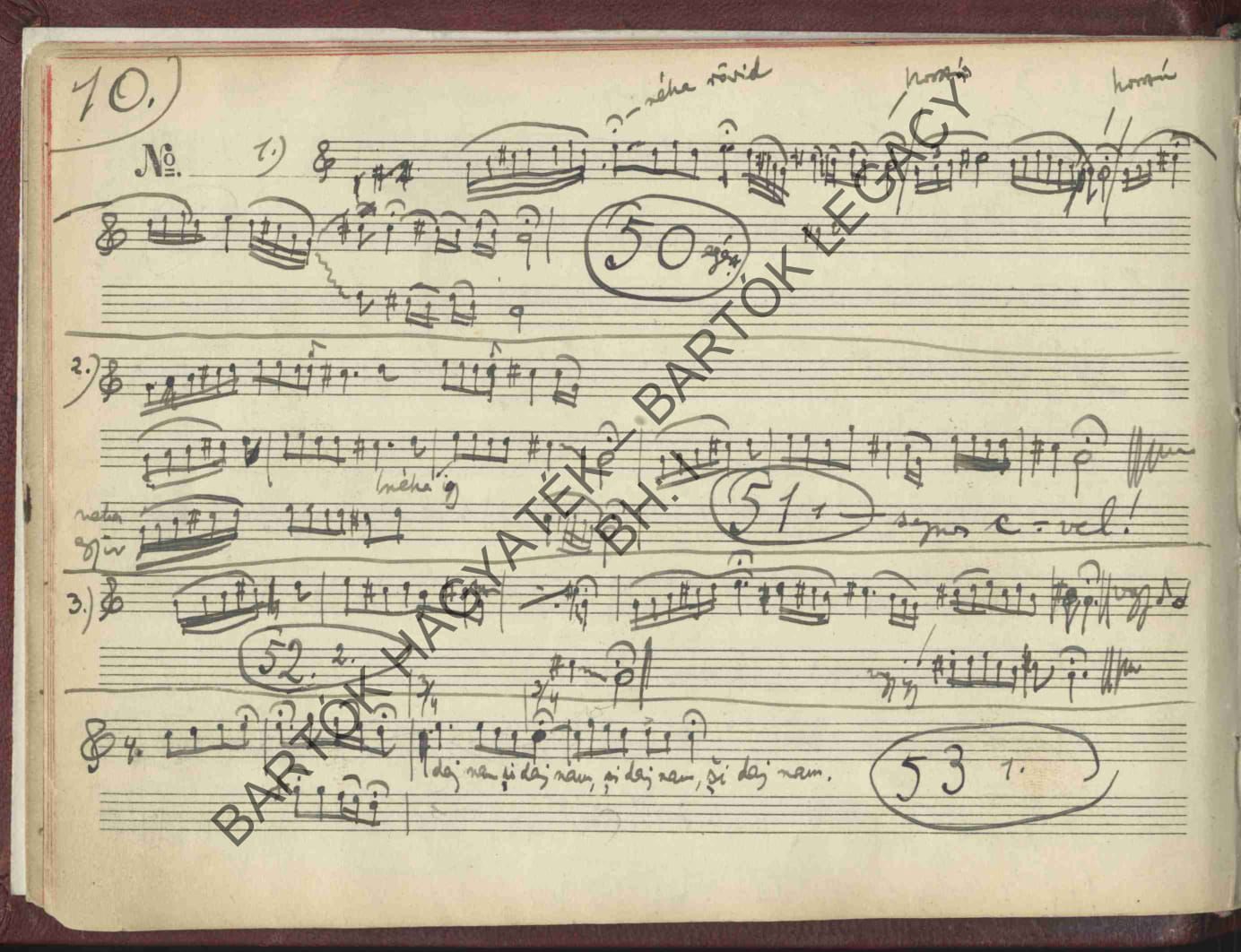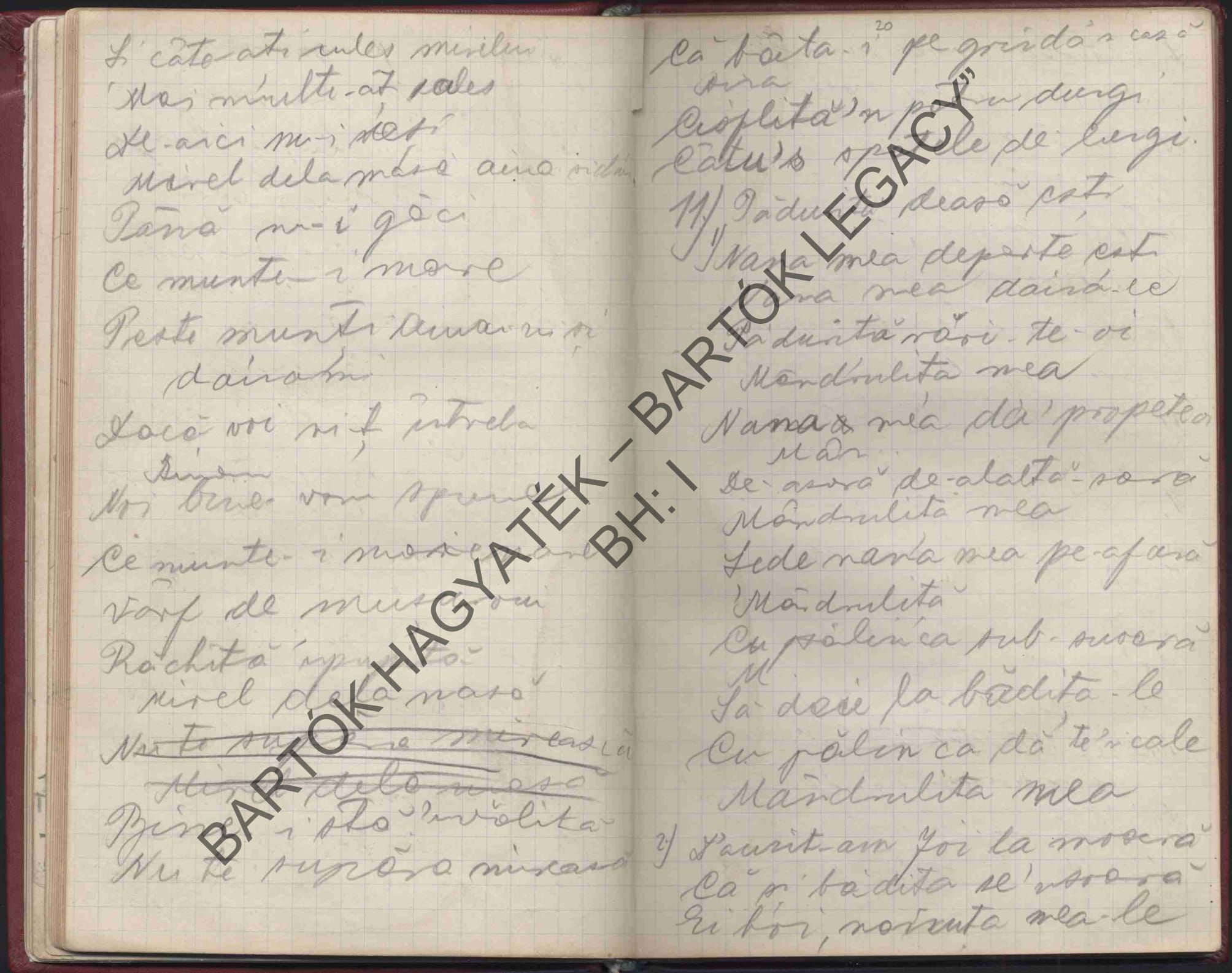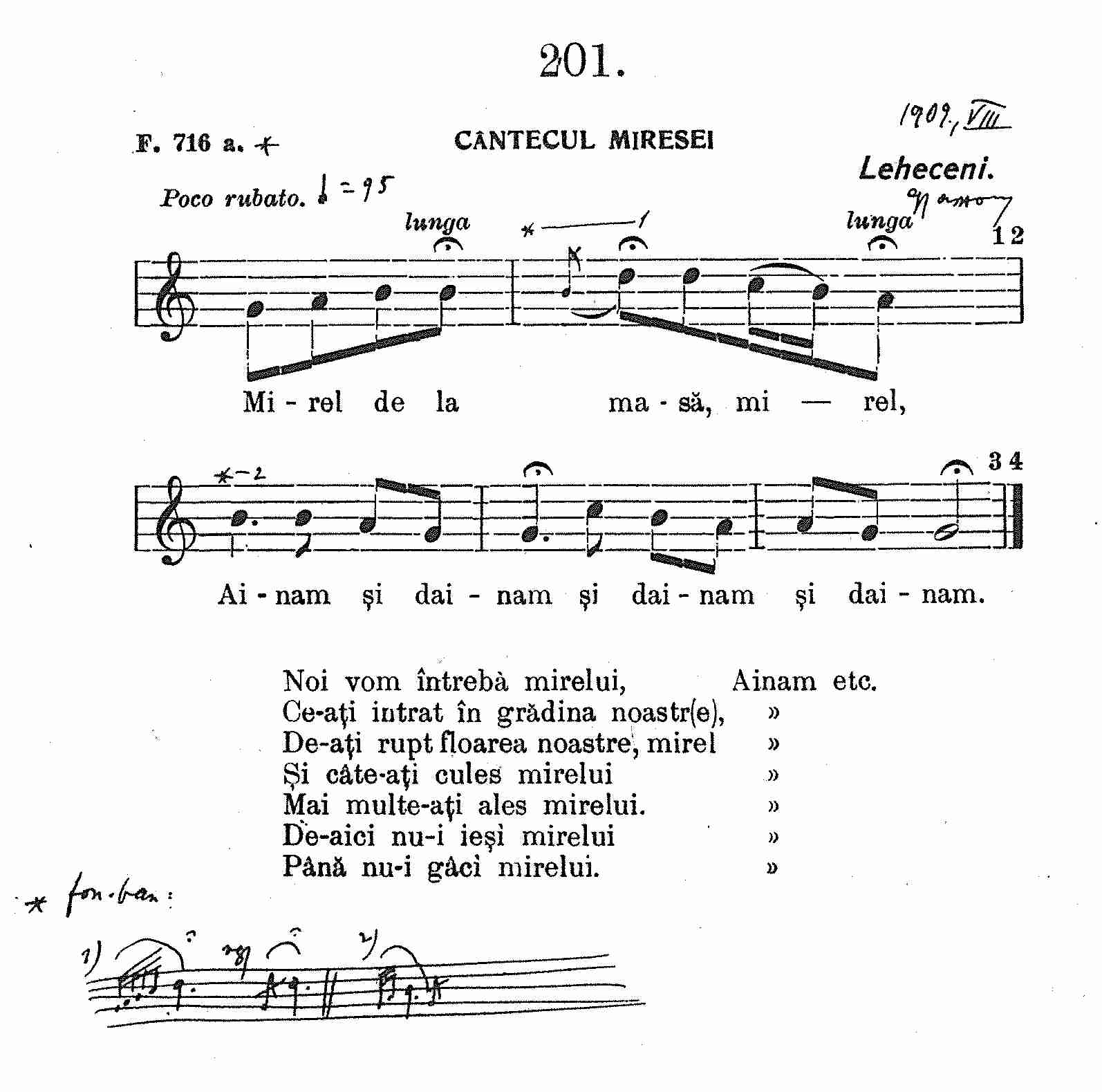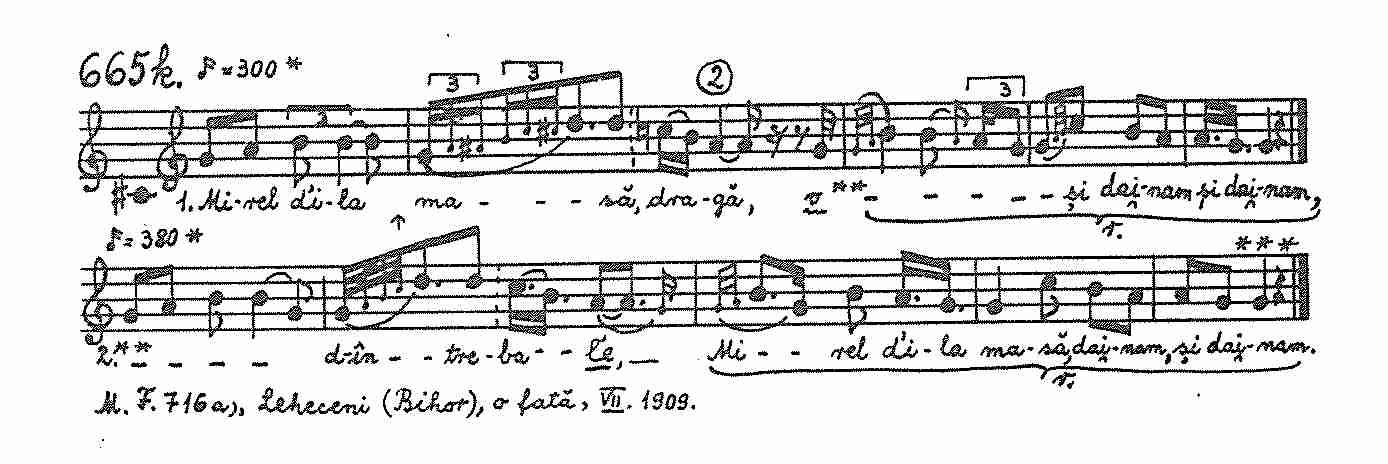L 155
1. Nu te supăra, mireasă
Two Romanian Folk Songs for women's voices (1909?; BB 57)
There are two sources to the melody: the verses (mm. 1–5) and the refrain (mm. 6–8) are based on two different folk songs.
The source of the verses:
The source of the refrain:

Choir of Selected Students of the Liszt Academy of Music and the Eötvös Lóránd University
Conductor: László Dobszay
BMC, 2014
Nu te supăra, mireasă,
Nu te supăra, mireasă,
Dainam și dainam și dainam și dainam.
Că-i bota pe grindă’n casă,
Că-i bota pe grindă’n casă,
Dainam și dainam și dainam și dainam.
Și cioplită’n patru dunge,
Și cioplită’n patru dunge,
Dainam și dainam și dainam și dainam.
Bride, don’t be discomforted,
Bride, don’t be discomforted,
Hey, come, let us sing, let us sing, let us sing.
For the club lies on the crossbeam,
For the club lies on the crossbeam,
Hey, come, let us sing, let us sing, let us sing.
And it is carved four-square,
And it is carved four-square,
Hey, come, let us sing, let us sing, let us sing.


